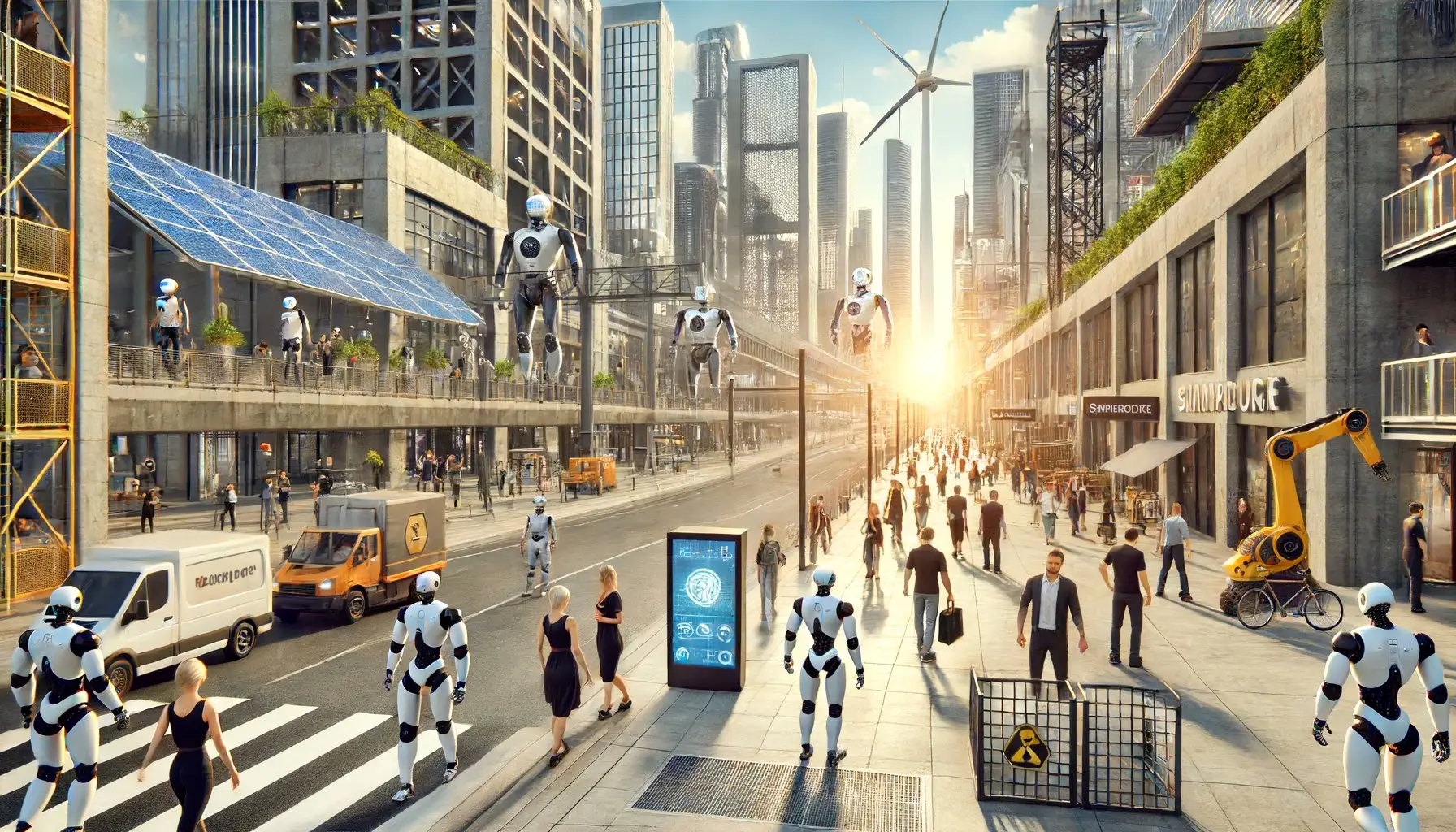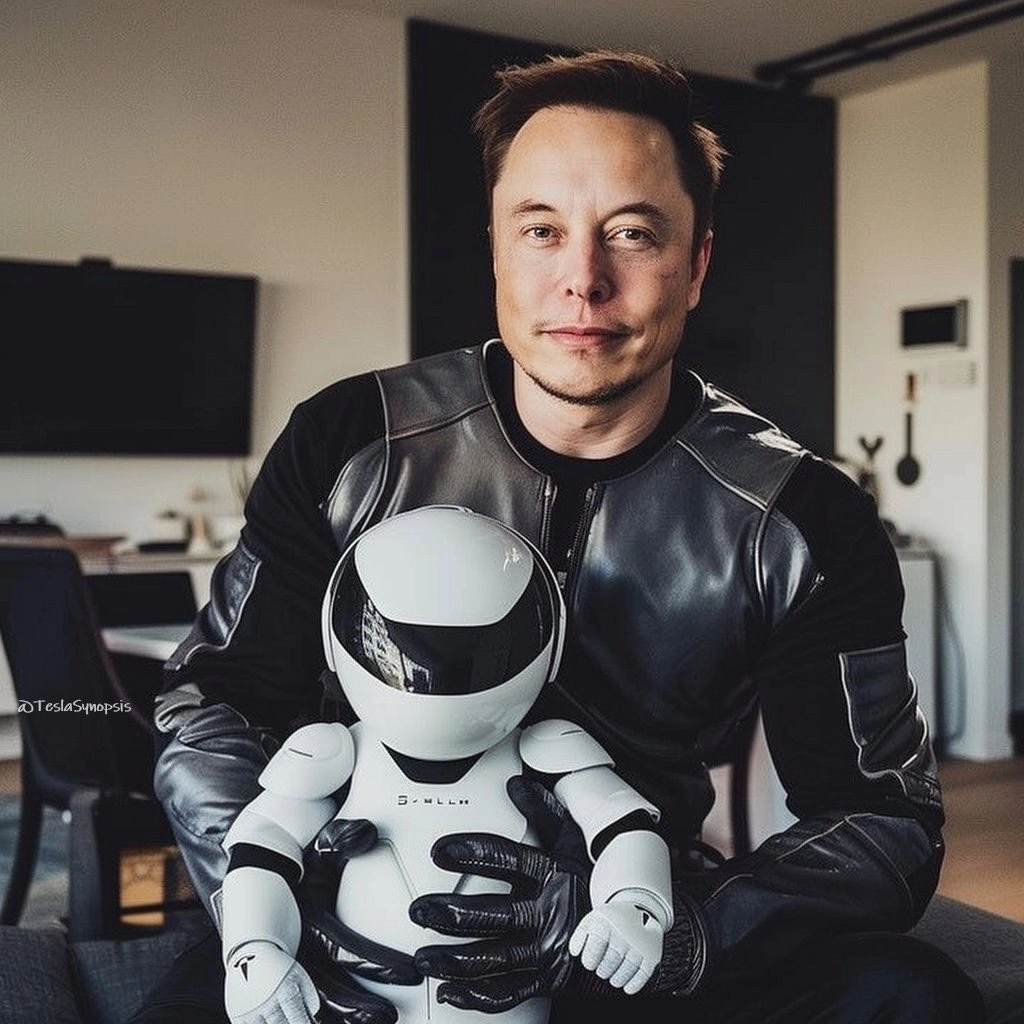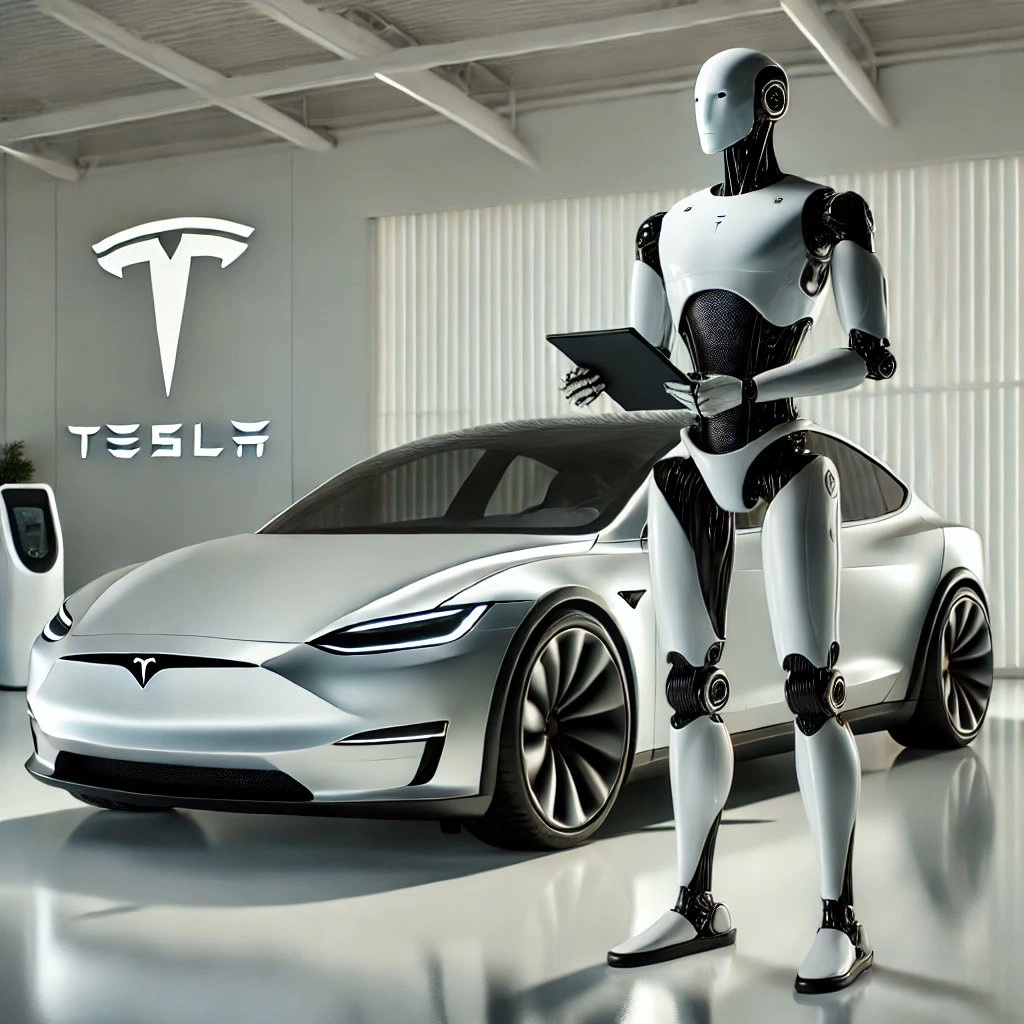Elon Musk
@elonmusk‘Tesla annual meeting in 25 mins!’
@SkillsGapTrain @elonmusk “Dear Elon and Tesla Team,
We commend your ambitious vision for Tesla’s Optimus humanoid robots, as shared during the Annual Shareholders Meeting. Your projection of producing one to two robots for every human on Earth, leading to an estimated 10 to 30 billion robots worldwide, is indeed groundbreaking.
‘This future where robots become integral to various industries and daily life holds immense potential for transforming society.’
However, we would like to address some concerns and suggest an alternative approach that‘balances technological advancement with sustainability, life systems protection, resource systems protection, natural systems protection, economic systems protection and ethical considerations.’
Concerns:
Resource Depletion and Environmental Impact
The mass production of billions of humanoid robots, especially at a six-foot size, significantly raises concerns about resource depletion and environmental impact.
As we aim to modernize cities across the emerging and frontier market economies and countries, and improve living standards globally, the demand for resources is increasing at an unprecedented rate.
Adding the production of such a vast number of robots could ‘exacerbate resource scarcity’, ‘contribute to pollution’, and ‘drastically reduce arable land fertility‘, and cause ‘significant increase in food cost‘, and further ‘exacerbate the declining standard of living problem‘ emerging.
‘This is particularly worrying in light of the ‘Limits to Growth’ models, which already warn of drastic reductions in our standard of living and food production capabilities, due to resource constraints and rising pollution effects on our natural environment.’
Economic Implications
The economic implications of producing and maintaining, an evolving sequence of iteratively upgraded and evolving robot production lines, similar to vehicles and computers generation and frequent model changes, billions of robots are substantial!
‘The sheer scale required to achieve your vision would place a tremendous burden on material supply chains, manufacturing infrastructure, waste management systems, resource metrics, farm metrics, water metrics and climate metrics.’
While you mentioned that the cost of producing these robots could be around $10,000 each at high production scales, the overall economic burden and sustainability of such large-scale production must be carefully considered.
Additionally, the production of these robots would ‘significantly increase demand for commodities’.
The mining and processing required to obtain these materials would have substantial environmental impacts, contributing to climate change.
This increased demand could also drive inflation for hard commodities, affecting citizens at unprecedented rates, via escalating commodity and product prices.
As the demand for metals like lithium, cobalt, and rare earth elements rises, so too will the costs associated with these materials, leading to higher prices for a wide range of products and thereby increasing the financial burden on consumers(Resource Panel) (Knowledge4Policy).
Ethical and Social Implications
The widespread deployment of humanoid robots, especially in sensitive areas like defense, raises significant ethical concerns.
Ensuring that these systems operate under strict ethical guidelines and human oversight is crucial to prevent misuse and safeguard societal values.
Additionally, the potential for job displacement and the ethical considerations of robots making life-and-death decisions in combat scenarios must be addressed.
Defense Capabilities and Firmware Updates
The idea of robots doubling up for defense and receiving firmware updates to ‘activate national defense functions‘ opens up a complex set of issues. These robots, could have a built in ‘defense function’, to act as a defensive force during invasions by entities like Russia, the CCP, North Korea, Iran, and their allies, but this requires careful consideration of several factors:
Security Risks:
Firmware updates for defense purposes must be foolproof to prevent hacking or misuse, which could lead to catastrophic consequences.
Ethical Concerns:
The delegation of defense responsibilities to autonomous robots raises ethical questions about accountability, decision-making in combat, and the potential for unintended harm. International
Regulations:
Deploying robots for defense on such a scale necessitates the establishment of international regulations and agreements to manage the use of autonomous defense systems responsibly.
Accelerated Obsolescence and Resource Depletion
The iterative cycle of updating and improving robot designs, similar to the computer industry, poses another challenge.
Full-sized, resource-intensive robots would quickly become obsolete with each new design iteration, leading to accelerated resource depletion.
‘Most of the robots produced, would end up in land fills, with a bit going to recycling, similar to how computer waste and vehicle waste does today, and this has always been the case.’
The frequent replacement of outdated models would result in a significant increase in waste and further strain on already limited resources.
Last, the production of these robots, would significantly increase demand for commodities, climate affecting mining processing, and therefore, it would increase inflation to citizens at unprecedented rates for hard commodities
Proposal:
Develop Smaller, Resource-Efficient Robots
‘Instead of aiming for full-sized robots, consider developing smaller, more resource-efficient models.’
‘Toy sized models’ or ‘Kid sized models’.
Imagine one-foot-tall robots that possess the same intelligence and capabilities as their larger counterparts.
These miniature robots could follow us around, assist with daily tasks, on the smartphone or laptop for work purposes, and even perform some industrial duties, all while significantly reducing the environmental footprint.
This would allow us to harness the benefits of advanced robotics without exacerbating resource depletion and environmental degradation.
This is especially important during the first ten years of the evolution of these designs, where rapid robotic platforms revolution and change is expected.
Sustainable Manufacturing
Embrace advanced manufacturing techniques and ‘Industry 4.0 principles’ to enhance efficiency and sustainability.
Utilize renewable materials and energy sources, and implement closed-loop systems to recycle materials and minimize waste.
By focusing on smaller-scale, high-impact deployments, we can ensure a more sustainable integration of robots into our society.
Phased Implementation and Ethical Oversight
Begin with a phased approach to deploying robots, focusing on high-impact areas such as healthcare, logistics, and defense.
This can provide valuable insights and allow for gradual scaling while addressing ethical and practical concerns.
Ensuring that these systems operate under strict ethical guidelines and human oversight is crucial to prevent misuse and safeguard societal values.
Conclusion:
Your vision and leadership in advancing technology continue to inspire us all.
By adopting a more measured and sustainable approach, like‘kid sized models instead of adult humanoid robot models for consumers‘, we can achieve a future where robotics enhance our lives while preserving the resources, land fertility, the environment and ensuring ethical integrity and ‘AI Safety’
We hope that Tesla, and fellow humanoid robot production companies, consider these perspectives and come to a negotiation and a workable solution.
Perhaps the ‘AI Safety Board and Security Board’ is just such a vehicle to begin such talks.
‘Remember, it might not be a function to limit both the profitability level to Tesla, and the usefulness of the robots to people, to have smaller scale robots. It is good to ponder solutions now.’
‘Remember, the ‘AI Safety’ issue, is not simply the issue of how to prevent robots from directly harming us, but how to protect us from the humans who deploy these systems from indirectly harming us.’
Thank you for considering these perspectives!!!!!!!

@TeslaSynopsis “Will you buy a Tesla bot in the future?”

@SkillsGapTrain “We’d consider purchasing a Tesla bot for our office if it’s designed as a small, eco-conscious model, visually similar to the one depicted in the provided image. The bot in your photo looks like the Stig from Top Gear, so yes we would really like this design.
This bot would prioritize minimal environmental impact and sustainability, ensuring it doesn’t exacerbate demands on scarce resources such as minerals, elements, or energy.
The bot would possess advanced digital twin functionality, capable of learning from the user and adapting over time to become like the main user or sets of users. This adaptability ensures a personalized and effective assistant that reflects the user’s own principles, lessons learned, and experiences through continuous interaction.
Further enhancing its utility, the bot could load and integrate a vast array of documents — essays, reports, books, and other content generated throughout a user’s life.
It would also benefit from an extensive, user-selected library of PDF files, creating a broad knowledge base more specialized than the general AI capabilities it comes with.
This enables the bot not only to perform general tasks but also to handle complex, specialized activities that require a deep understanding of the user’s specific field or interests and area of practice.
To ensure optimal integration and usability, we envision the following specific features:
Enhanced Security Measures:
The bot would feature robust security protocols to safeguard the personalized data it handles, especially when operating within sensitive or private contexts.
Detailed Documentation Ability:
The bot would by default be able to assist with, such as managing communications, scheduling, data analysis, and more, showcasing its versatility in a professional environment, and helping remove the administrative requirements of humanity (the cause of no professional labour available for specialized professional work, as it is all trapped in bureaucracy).
Adaptive Learning Mechanisms:
Utilizing advanced machine learning algorithms, the bot would continually adapt and refine its functionalities based on user interactions and feedback, enhancing its efficiency and relevance over time.
Offline Functionality:
To address privacy concerns, the bot’s digital twin capabilities would operate effectively offline (not even connected to the user’s main MacBook Pro, which would make the bot a type of hardware key or private key to user’s personal digital twin), ensuring that sensitive data remains within the secured encrypted custom hardware and not in external cloud storage of private corporation.
This approach not only makes the Tesla bot a practical, customizable, and environmentally friendly assistant but also ensures it is equipped to meet specific office needs while maintaining high standards of data privacy and security, and protecting the user’s data throughout life near by within arms reach, and protecting the user against large AI attacks from outside agents by detecting AI manipulation that might be employed against it’s user.
(Similar to how commander Data defends the Enterprise against Borg attacks and hacking attacks by encrypting the ship’s computer or sending sleep commands to the HIVE mind). #AISafetyBot

@Tesla_Optimus “Trying to be useful lately!”
@SkillsGapTrain@Tesla_Optimus “Hello Tesla team,
We appreciate your continued efforts to innovate and provide useful solutions, often surpassing the standards set by other American companies.
We have a feature request that we believe could enhance the Tesla ecosystem further. We would like to see the X platform offer a “data archive backup download” option that can be easily installed in both a Tesla robot and a Tesla car.
This feature would create a digital twin, allowing the car and the robot to share values and understanding seamlessly.
While we could attempt to implement this ourselves, we are concerned about ensuring the robot acts safely and responsibly.
It would be invaluable to have a system where users can upload their digital X twins to their Tesla robots, providing peace of mind that their data won’t compromise safety.
This feature could pave the way for a future where technology truly enhances our lives in a harmonious and secure manner, and in a personalized manner (one that entices humans to get to know other robots and to speak with neighbour’s robots)
Thank you for considering this suggestion.
Best regards, Valentin @SkillsGapTrain”
Extra Note:“Please design the semiconductor upgrade process to be as modular and upgrade-able as possible. To save on upgrade costs, while minimizing resource waste in terms of body infrastructure. Additionally, we encourage making software accessible to some engineers to help facilitate learning and hands-on experience. This approach will not only enhance the system’s flexibility and longevity but also support the education and skill development of engineers to enhanced robotics understanding.”
@SkillsGapTrain @TeslaSynopsis “The film industry should create a Terminator reboot with Elon Musk as the new robot, designed to look just like a young Elon in the photo above.
Related Content:
Title: “Limits to Growth: A Global Food Crisis Looming on the Horizon and the Urgent Need for Decentralized Expansion of Independent Agricultural Producers in Canada, as a Path to Global Food Security and a High Standard of Living”x.com/SkillsGapTrain
Title:“Safeguarding Existence: The Farmer’s Role in an Era of Smart Cities and AI Dominance” skillsgaptrainer.com/safeguarding-e
To see our Donate Page, click https://skillsgaptrainer.com/donate